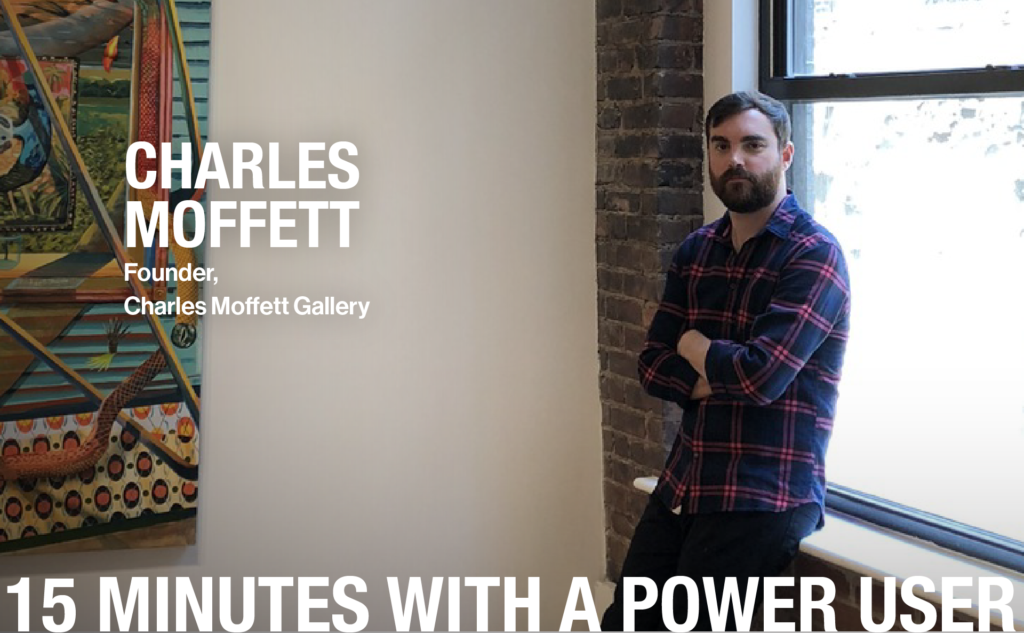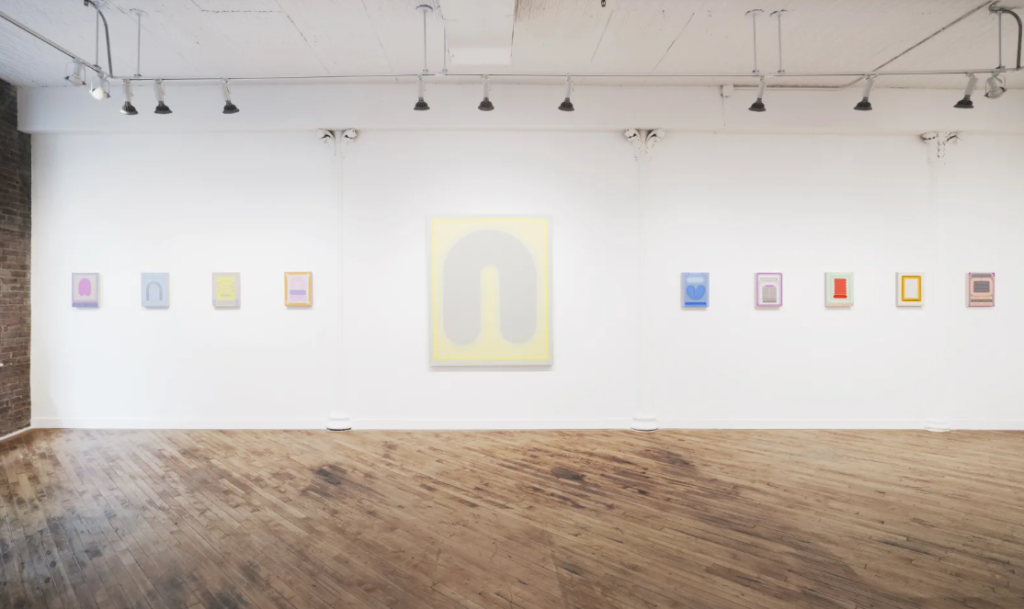15 Minutes With a Price Database Power User: Charles Moffett


Artnet Price Database Team

Art world insiders trust one tool to buy, sell, and research art: the Artnet Price Database. These users cross industries—from auction houses and galleries, to museums and government institutions—and represent the art world’s most important players. We’re taking 15 minutes to chat with some of the Artnet Price Database’s power users to get their take on the current state of the market and how they’re keeping up with the latest trends.
Charles Moffett may have deep roots in the art world, but when he opened his eponymous gallery in 2018, he set out to build something of his own. Since leaving his position as a contemporary art specialist at Sotheby’s and starting Charles Moffett Gallery, he has built an enviable roster of emerging artists. The gallery has already exhibited Lily Stockman, Sam Bornstein, and Bari Ziperstein, making it the rare new, mid-sized gallery to succeed in the increasingly competitive primary market.
It’s worth noting that Charles came to the gallery sphere with not just art world experience, but a legacy as well: his father, Charles S. Moffett, was a venerable curator of Impressionist art who also had a storied career at Sotheby’s. While the younger Moffett’s history is no doubt an advantage, he’s also eagerly breaking from the past and charting new territory—building a new kind of gallery model that can support young talent long-term.
We had the chance to hear more about what it’s really like to make a career change in the art world, the best part about owning a gallery, and what Charles looks for in an artist.
You formerly worked at Sotheby’s as the co-head of Contemporary Art Day Sales, and now you’re a gallerist representing young artists. What spurred you to shift course
Leaving Sotheby’s was one of the hardest decisions I’ve ever had to make in my life. My colleagues at the auction house were more than just that, many of them friends and people I consider family. However, despite all of the good things that came with working at Sotheby’s, there was one thing missing that tipped the scales for me, and that’s working directly with artists. I wanted to build something that I could call my own while championing the careers of artists.
How does your background as a specialist inform your work as a gallerist?
When I was a specialist, I had the tendency to be brutally honest. That meant if a client inquired about a picture that had a condition issue, or was interested in a work that was inferior to a painting coming up in a future sale, perhaps in London or Hong Kong, I would advise them against bidding or push them to the stronger example. Even if this meant one less bid in the sale I was working on, or having the chance to raise my hand in an evening sale, it simply did not feel worth it. I have taken that approach to my life as a gallerist. I need to believe in the work that I am showing. If I do not feel confident that I have collectors, or that I can find collectors for the work, I am not going to put an artist or myself in a position where success is a total gamble.
As a dealer for emerging artists, you rely on your instincts more than gallerists who represent more established artists. How do you train your eye and continue to discover work that feels fresh?
This is probably not the answer you’re looking for, but for me, it’s entirely intuitive. I approach each artist in relation to what has been made and what is being made. I also need to factor in who is already showing with the gallery, and whether or not they add something new to the program.
What do you look for in an artist you’re looking to add to your roster?
When I look at an artist’s work I like to see something that is unmistakably their own. I can’t remember the last time I did a studio visit, and there were not monographs open or clippings taped to the wall. Sometimes it’s wall- to-wall images of 19th-, 20th-, and 21st-century luminaries. I like to see how that imagery and theory is distilled down into their own work. How is it filtered through their own eyes and brain to create something original, to tell a story we haven’t heard yet?
What has been the best part of opening your own gallery? What has been the most surprising part of having a gallery?
Working with artists is easily the most gratifying part of opening the gallery. Without the artists, none of this—the gallery, the fairs, the exhibitions—would exist. There is a moment before every opening when it all comes together, I see the gallery installed, and I have to pinch myself. The most surprising part of having a gallery has been who has come out to support it. The vast majority of the collectors who support the artists I work with are not the same people I was on the phone with bidding at auction. Perhaps that will change as I begin to phase in secondary market shows.

Installation view of “Lily Stockman: Loquats” at Charles Moffett Gallery in 2018, the gallery’s inaugural exhibition.
Last year, you had booths at fairs from EXPO Chicago to NADA Miami. What’s it like to be on the dealer’s side of an art fair? What percentage of your business comes from gallery sales versus fair sales?
Having spent a few years working with an art advisor before going to Sotheby’s, I got to know the art fair circuit really well. Having that experience made the transition to the dealer’s side a much easier move, maybe too easy? Now I am wondering if I am doing something wrong! Approximately 30 percent of our business came from art fair sales in 2019.
If you could represent one artist not already on your roster, who would it be and why?
Tough one! There are a lot of artists I’d love to work with. And while the gallery is focused strictly on emerging artists, I do see a day when we phase in more established artists, and possibly estates. With that being said, I’ll float two names. The first is Benny Andrews. A number of years ago I saw a presentation of his work at the Ogden and could not believe my eyes. Since then, I have done my best to seek it out whenever and wherever possible. If you visit the Benny Andrews Estate website, you’ll find a quote that begins with, “For Benny there was no line where his activism ended and his art began.” What an incredible way to be remembered.
The second is Elisheva Biernoff. She is a fellow California College of the Arts alum. Ever since I was first introduced to her work I’ve been mesmerized by what she creates. Images will not do them justice, but if you missed Fraenkel Gallery’s 2017 exhibition, I urge everyone to at least take a look at the website for a better understanding of the time and effort that goes into creating each one of her paintings.
What was the last thing you searched for in the Artnet Price Database?